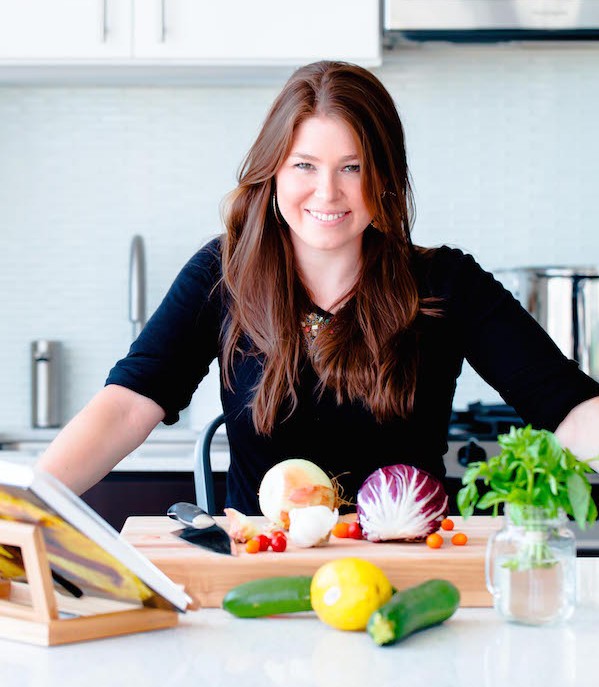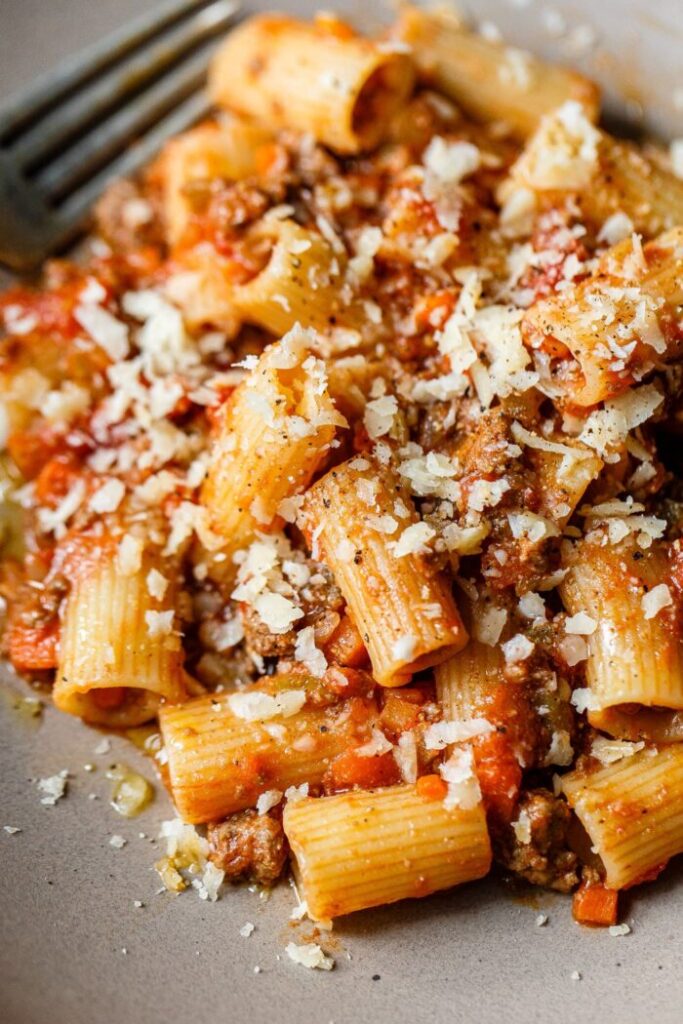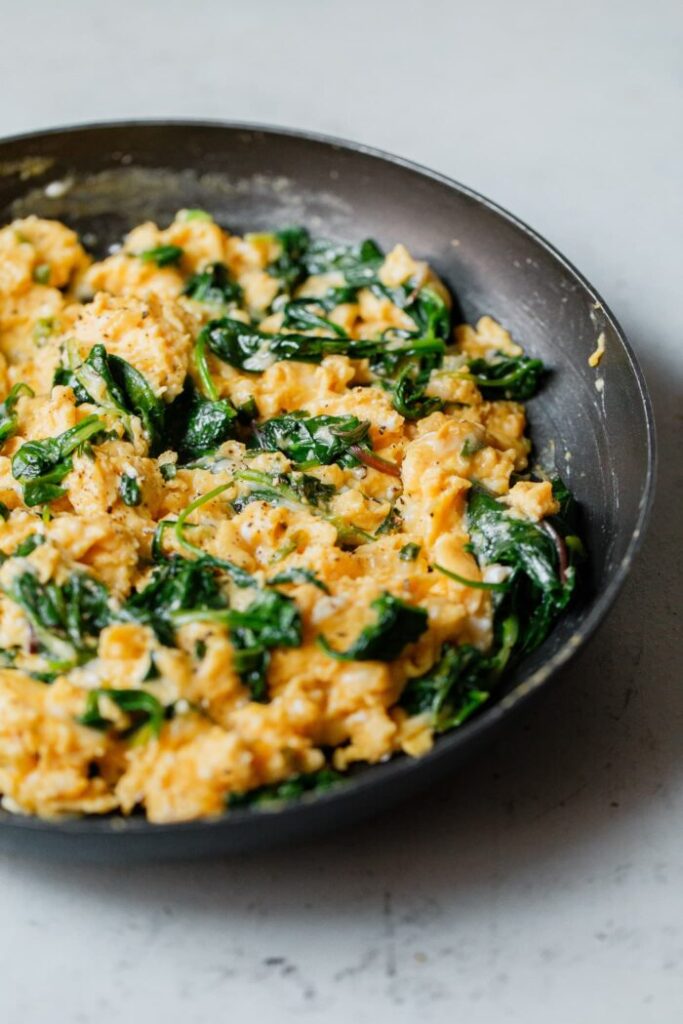Rhubarb Scones with Orange Glaze
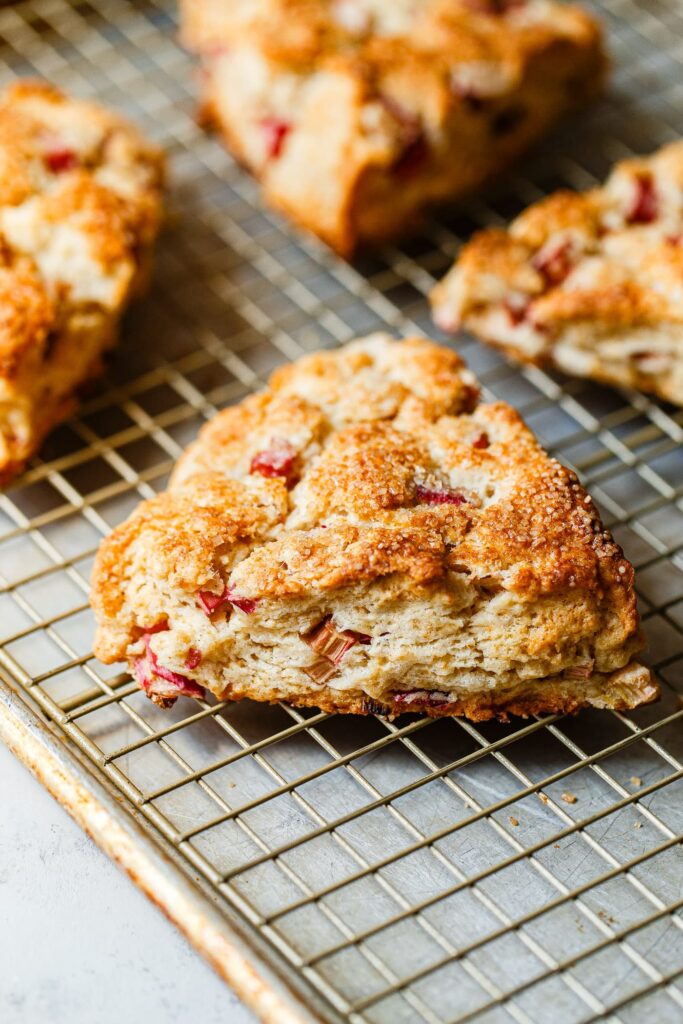
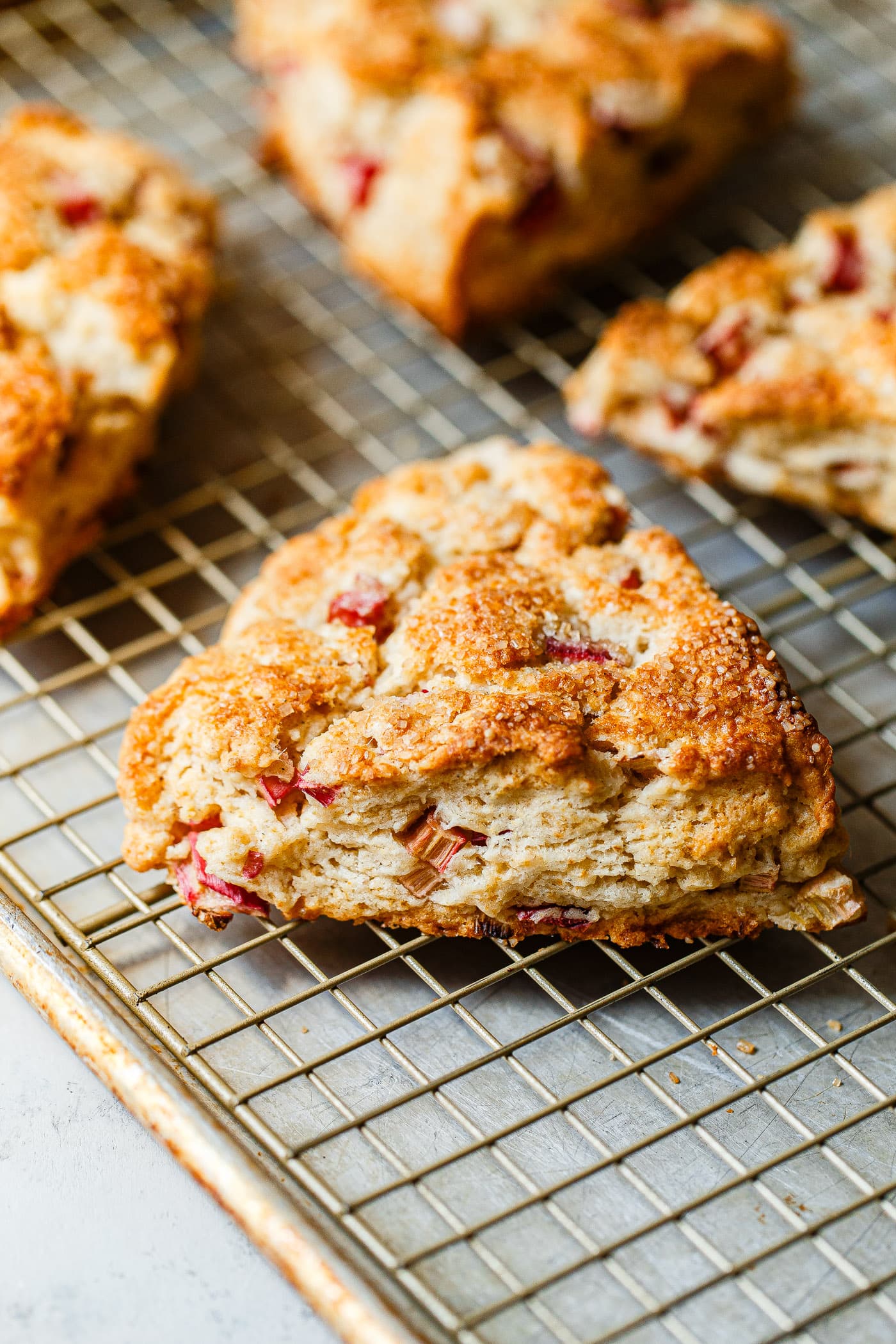
Celebrate the joy of seasonal baking with these Rhubarb Scones with Orange Glaze. I love finding new ways to incorporate rhubarb into baked goods and these scones exceeded my expectations.
For this recipe, I turned to my trusted scone dough formula, which uses a combination of cold unsalted butter and chilled heavy cream. The result? Delicately spiced scones with a tender crumb, crisp buttery edges, and tangy rhubarb pieces throughout.
To elevate them further, the scones are topped with a fragrant, zesty orange glaze. The orange complements the rhubarb beautifully and adds a burst of sweetness to every bite.
With a simple preparation and short bake time, these scones can be whipped up at a moment’s notice. To make the recipe even more user-friendly, I’ve included my favorite reheating and freezing instructions below.
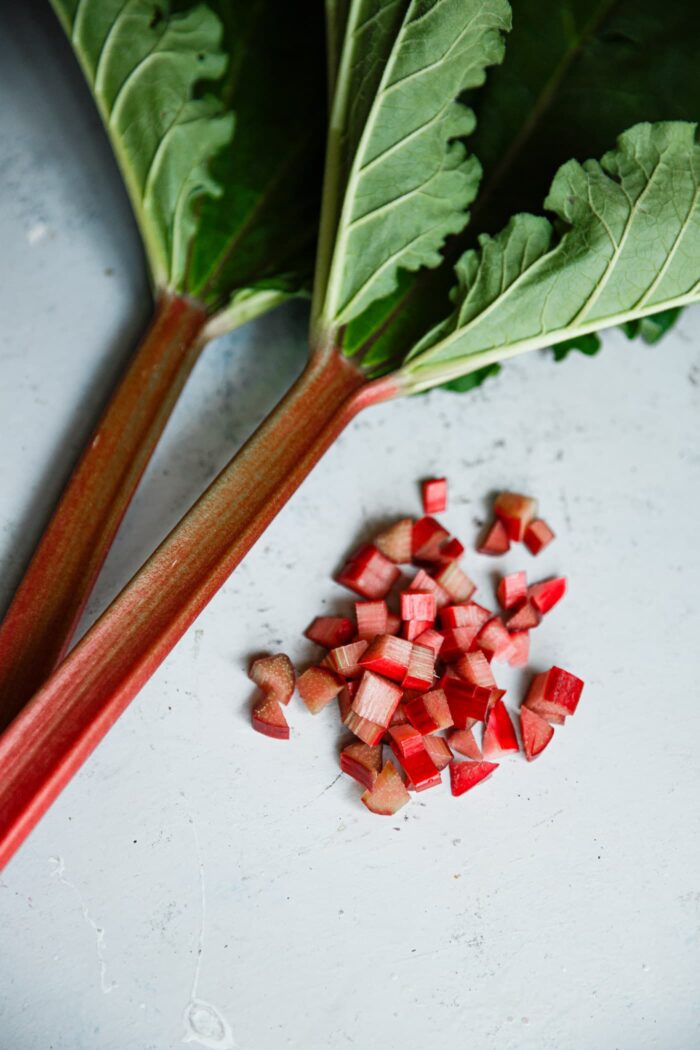
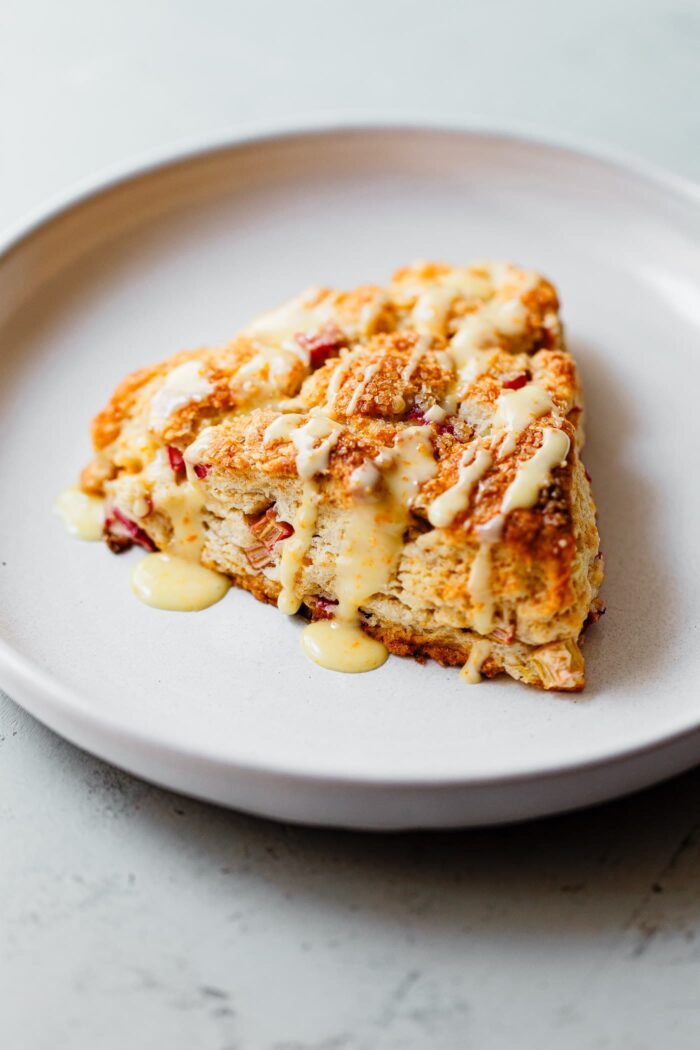
Why You’ll Love These Rhubarb Scones:
- Quick & Easy – scones are one of my favorite breakfast pastries, because you can whip up a batch with minimal to no preparation.
- Great Texture – unfortunately there are a lot of bad scones, which has given this classic baked good a bad reputation over the years. This recipe produces an ideal scone with a tender, moist crumb and crisp buttery edges.
- Easy to Reheat & Prep Ahead – These scones reheat beautifully – just be sure to skip the glaze until serving! Similar to cookie dough, you can also prep scone dough, freeze it, and bake from frozen (see full instructions below). Ideal for smaller households or gatherings.
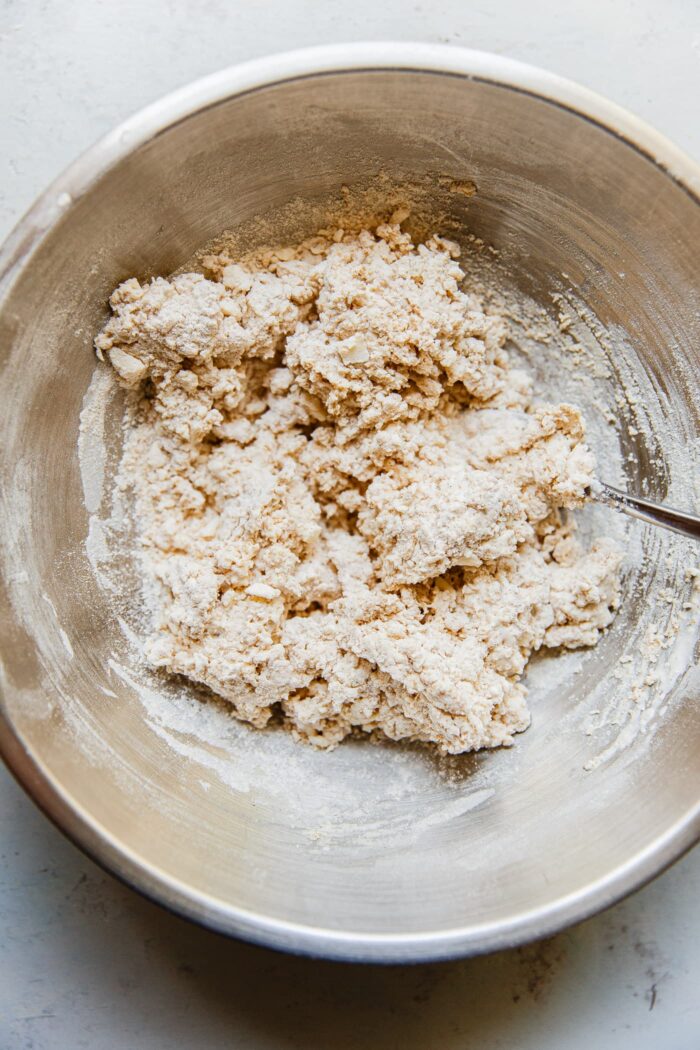
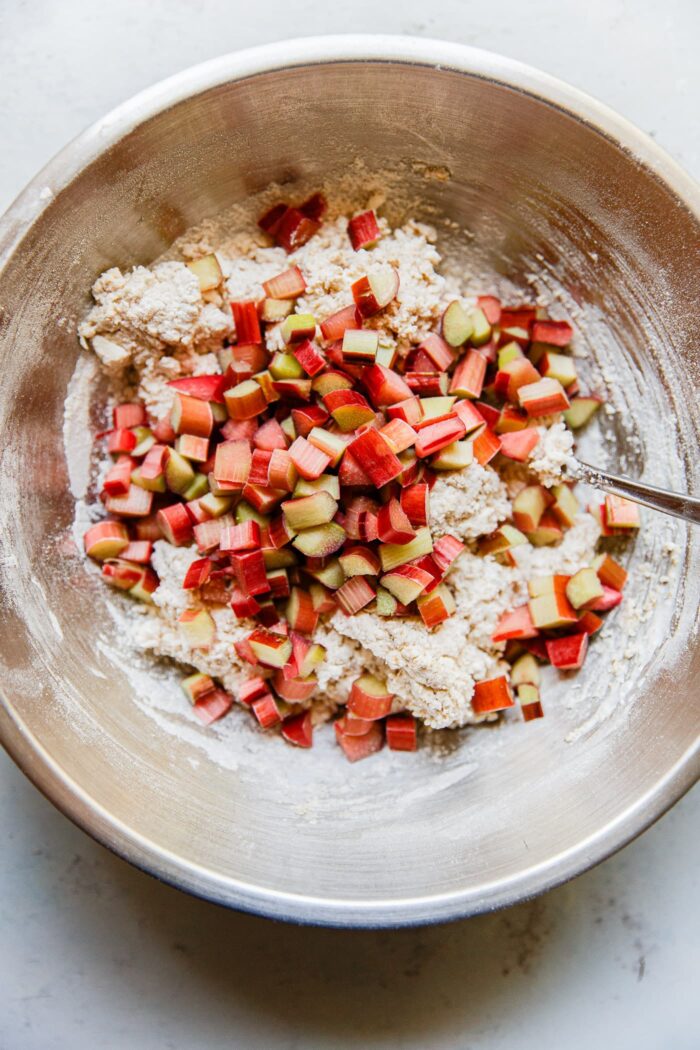
How to Make Rhubarb Scones:
- In a large food processor, combine the flour, sugar, baking powder, salt, cardamom, and cinnamon. Pulse several times. Add the cold cubed unsalted butter to the bowl and gently toss in the flour mixture until coated. Pulse 10 to 12 times, or until the butter is no smaller than the size of a pea. Transfer mixture to a large mixing bowl.
- Create a well in the center of the ingredients and pour in the cold heavy cream. Using a large fork, stir the cream into the dry ingredients. As the dough just starts to come together, stir in the diced rhubarb. Scrape the dough onto a clean, lightly-floured countertop. Press the dough together gently for 5 to 10 seconds, avoid over-working. Sprinkle with flour if the dough gets too sticky or difficult to handle. Pat the dough into an 8-inch diameter disc, roughly 1-inch thick. Using a sharp, large knife, cut the dough into six even wedges. Transfer to the lined sheet pan.
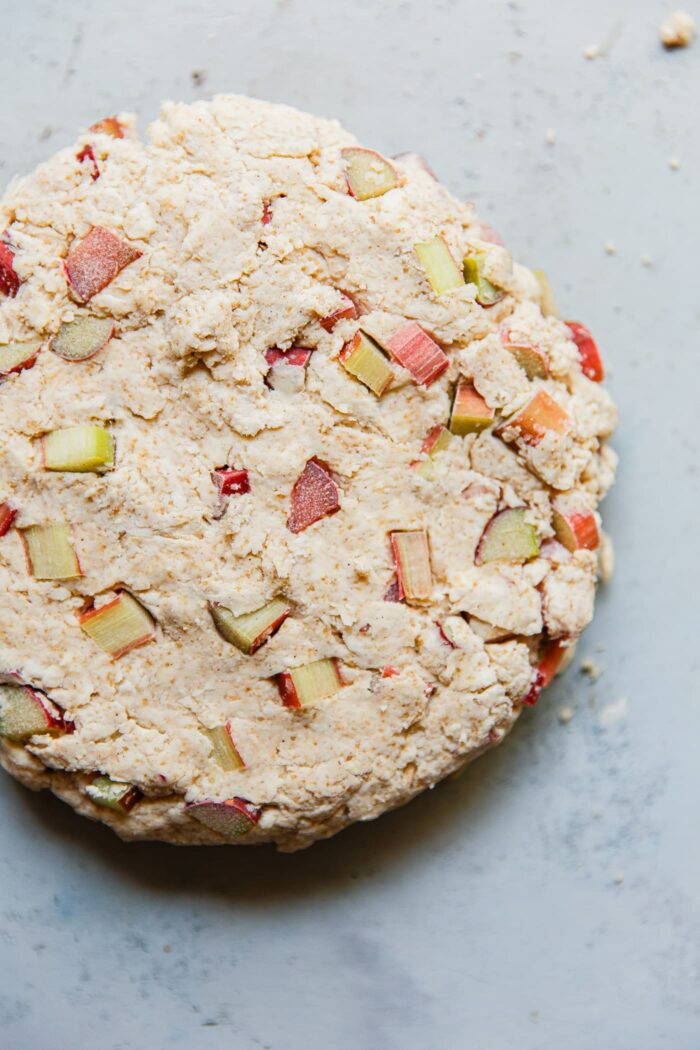
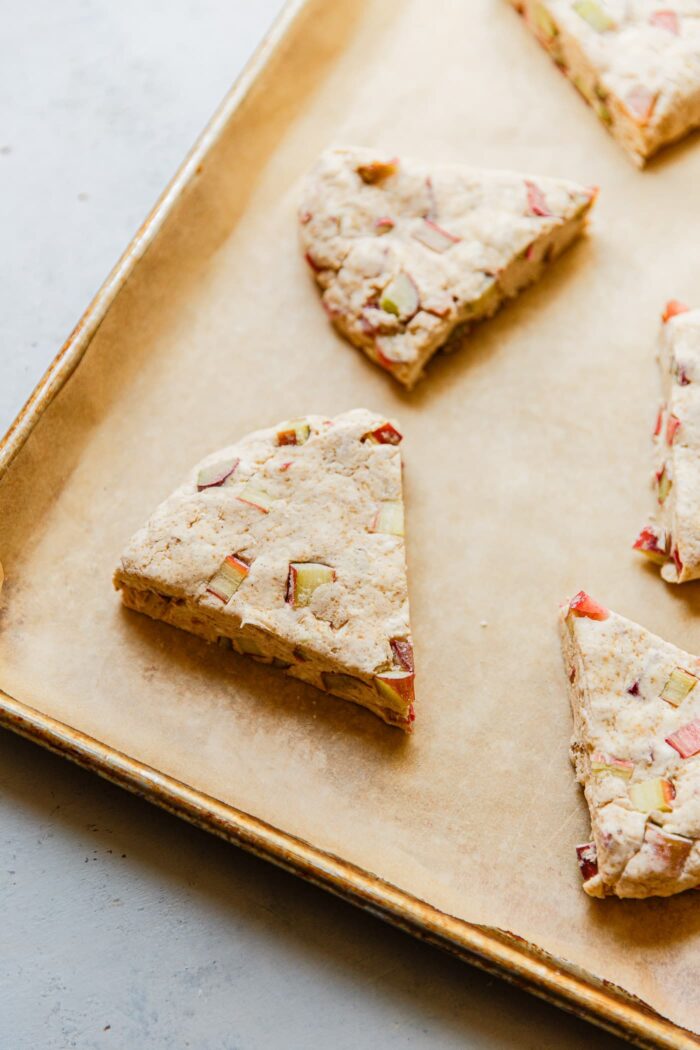
- Brush the tops of the scones with heavy cream, then sprinkle generously with demerara or turbinado sugar. Bake for 18 to 20 minutes or until golden brown. Allow to cool, then prepare and drizzle with orange glaze.
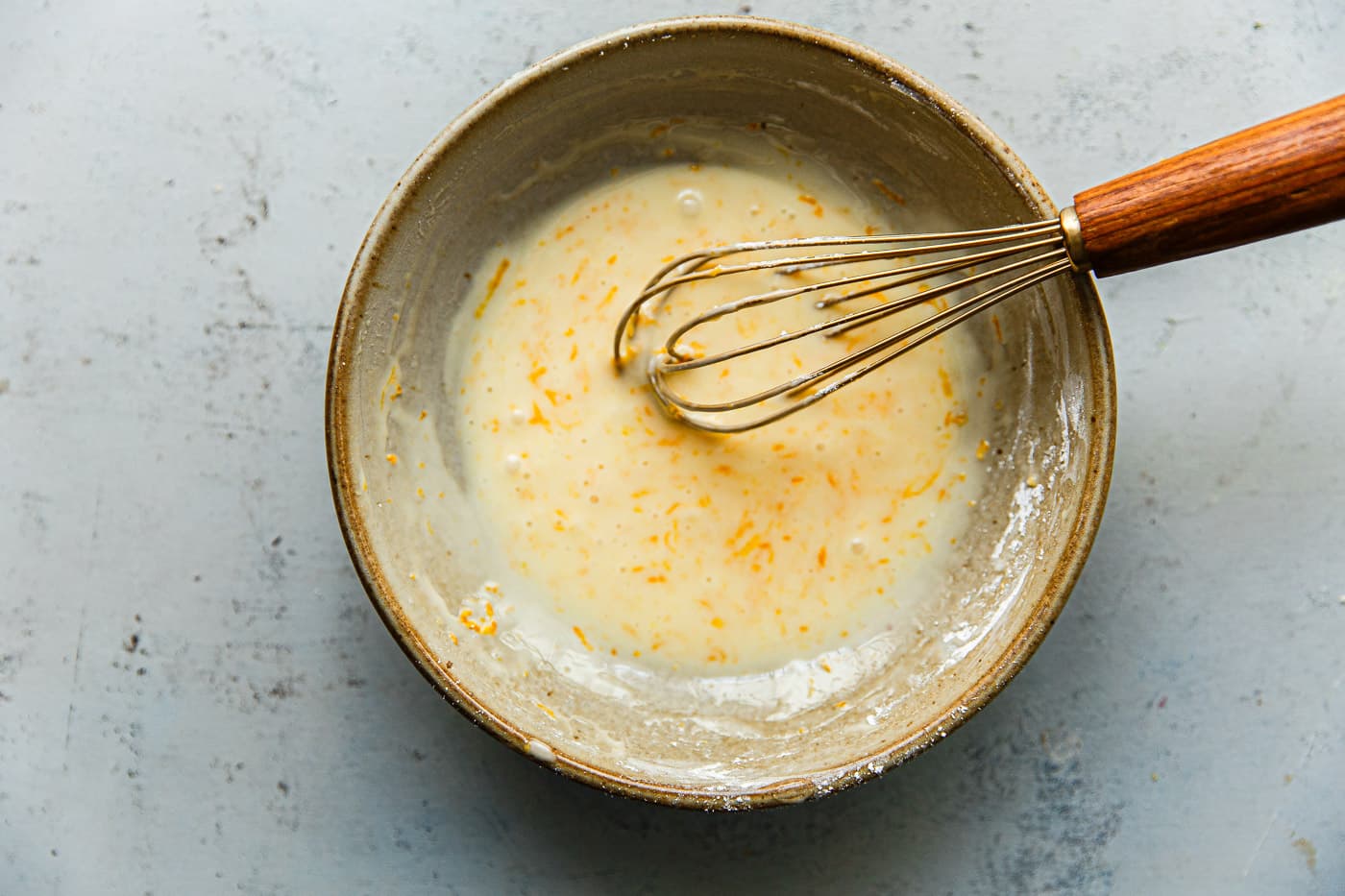
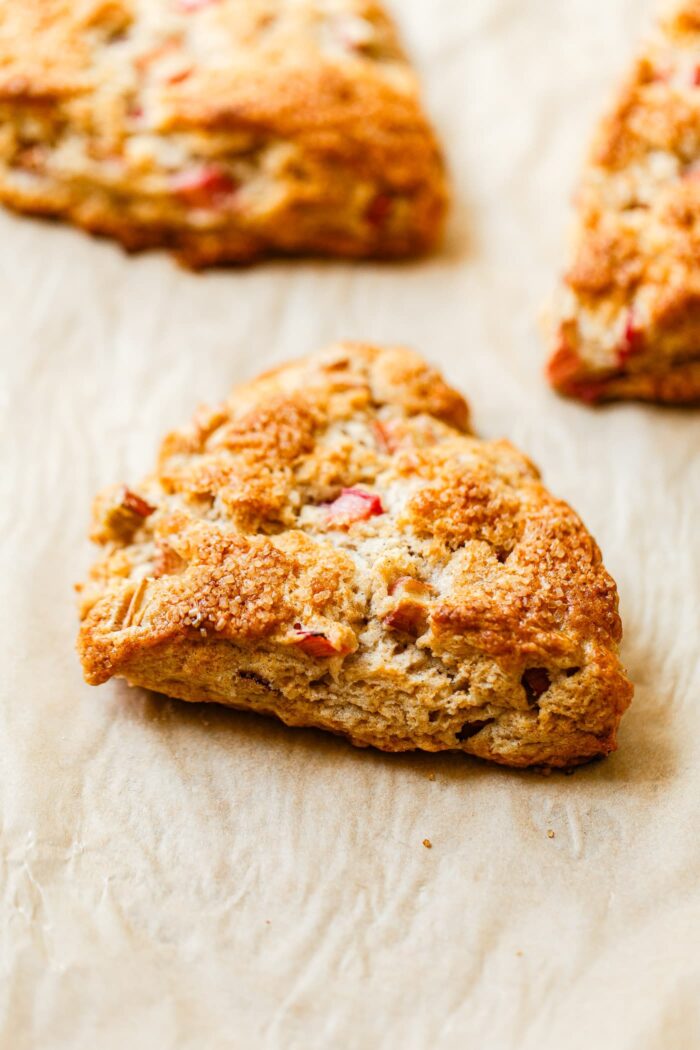
How to Reheat Baked Scones:
- These scones are best served the day they are baked. If you do plan on preparing the scones a day or two in advance, do not glaze the scones. This will allow you to reheat them in the oven.
- REHEATING SCONES: Preheat the oven to 350ºF (176ºC). Place the unglazed, baked scones on a parchment-lined sheet pan and bake for 10 to 12 minutes. Transfer to a rack to cool, then glaze and serve.
How to Freeze and Bake from Frozen:
- Alternatively, you can prepare the dough, cut into wedges, freeze, and bake from frozen as desired: Prepare the scone dough, cut into wedges, and set apart on a lined sheet pan. Place in the freezer until solid, then transfer to a large Ziplock bag, excess air squeezed out and sealed well. Freeze for up to a month.
- BAKE FROM FROZEN: Preheat the oven to 425ºF (220°C). Place the frozen scones on a parchment-lined sheet pan and bake for 20 to 22 minutes. Transfer to a rack to cool, then glaze and serve.
Ingredients
Crust:
- 1 9-Inch Prebaked Quiche Crust
Filling:
- 1 large leek, white and light green parts only (200g) sliced lengthwise and thinly sliced
- 1 tablespoon (15g) unsalted butter
- 1 tablespoon (15 ml) extra virgin olive oil
- ½ teaspoon kosher salt
- 2 ounces (60g) grated Gruyère cheese
Instructions
- 1 Note: This recipe requires a 9-inch prebaked quiche crust that is on the deeper side. You can prepare this quiche using a shallow tart or pie pan, but it will most likely not accommodate the full volume of custard prepared in this recipe. You can reduce the custard (using the ratio of 1 whole egg: ½ cup cream) or leftover custard can be baked in a ramekin (to produce a crustless quiche!) at 325°F (165°C) until just set.
- 2 Preheat the oven to 325°F (165°C) with a rack in the center position. Place the prebaked quiche crust on a rimmed sheet pan and set aside.
- 3 Sauté the Leeks: In a medium skillet, heat the butter and olive oil over medium-low heat. Once the butter has melted and is lightly bubbling, add the sliced leeks and sprinkle with ½ teaspoon kosher salt. Cook, stirring often, until the leeks are soft and tender, about 10 to 12 minutes. If the pan gets dry and they are beginning to gain color, add a small splash of water as needed. Transfer to a small bowl to cool while you prepare the custard.
- 4 Prepare the Custard: In a medium bowl, combine the eggs, heavy cream, Dijon mustard, salt, and nutmeg. Whisk until smooth.
- 5Assemble and Bake: Sprinkle the grated cheese onto the bottom of the prebaked crust. Distribute the sautéed leeks in an even thin layer on top. Pour in the egg custard – it should just about reach the top. Carefully transfer to the oven and bake for 40 to 55 minutes or until lightly golden and the custard is set, but still has the slightest jiggle in the center. Set on a wire rack to cool for 10 to 15 minutes before slicing. Serve warm or at room temperature.
Ingredients
- Make this recipe your own. Swap leeks for other sautéed or roasted vegetables, such as mushrooms, broccoli, asparagus, and more. Add crispy pancetta or bacon (. Experiment with fresh herbs, such as dill, parsley, or fresh thyme. Just keep a similar volume and be sure to cook down (sauté or roast) any fresh vegetables to minimize their water content.
Substitution Notes:
- Heavy cream boasts a fat content exceeding 35%, significantly higher than whole milk’s meager 3.5% fat. This difference matters, particularly for egg custards. Opting for whole milk or a milk-cream combo is, of course, possible, but will not deliver the best texture or flavor. [Note: This is a classic French quiche, not a light frittata.] Our goal is to make an authentically classic quiche that is exceptional in taste and texture, making the effort and time invested worthwhile.
